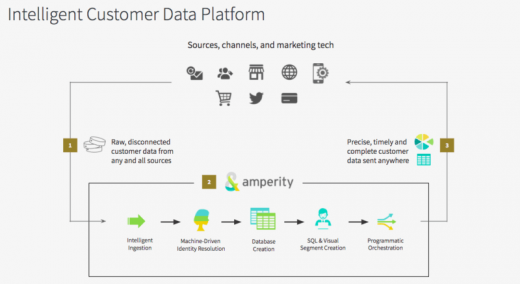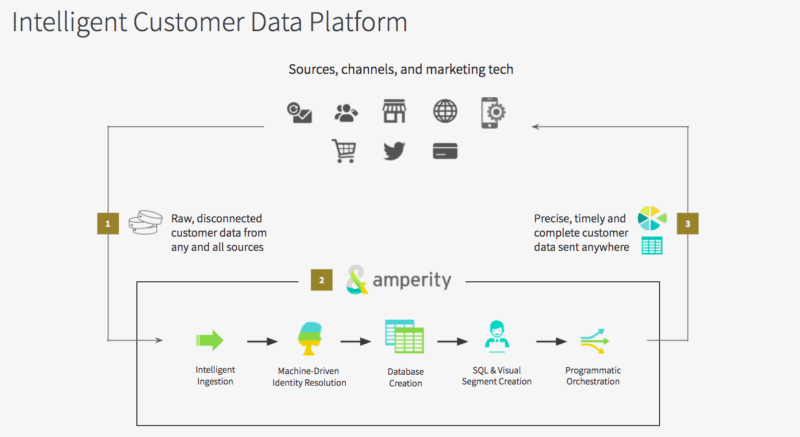Amperity emerges from stealth with a muscular CDP
Seattle-based company touts its customer data platform’s ability to ingest all kinds of data, a finer granularity for segmentation and the ability to make data like transactions part of the operational mix.

The Customer Data Platform (CDP) is steadily gaining traction as a way to centralize all customer data into a “gold master,” with other customer databases — such as customer relationship management systems (CRMs) — acting as another data source or a data destination.
Hoping to raise CDPs up a notch or two, a new one is launching this week into general release after a 17-month stealth period. Called Amperity and offered as the first product from a Seattle-based company of the same name, it is touting itself as a kind of CDP on steroids.
CEO Kabir Shahani told me that other CDPs are “evolved from CRM, tag management, or DMPs [data management platforms],” while his is evolved “more from MDM” or master data management, and is thus designed for industrial-strength data management.
For instance, he said, Amperity can ingest raw customer data without schema mapping or ETL, which he said other CDPs require. This means brands can dump raw clickstreams, CRM data, transactional data, mobile usage, third-party data and so on, which comes in handy for “some customers who have extremely large amounts of unstructured data.”
He also pointed to “an unprecedented level of computing” in his company’s platform, involving nearly 40 machine learning models, the platform-wide use of persistent identifiers to link users across devices and across data sets, deterministic modeling and an ability to dial up and down the accuracy rate. As with other CDPs, Amperity conveys its data via API to implementation tools, like marketing automation platforms.
Here’s Amperity’s visualization of what it does:
Instead of offering a match rate between data sets of 85 percent and describing that as a match, he said, Amperity allows the brand to determine if 85 percent is good enough. If not, it can increase the desired accuracy rate, although that probably means a smaller set of matches. And brands can set different accuracy levels for different use cases, on the same data.
This greater capability for data ingesting and computing can result in several tangible benefits for marketers, Shahani said. He cited a quicker and finer granularity for segmentation, richer profiles and client brands “who have reduced their ad spend by 30 percent because of the richer and more complete data set [that includes] a lot of data that hasn’t been operational, like transactions.”
Marketing Land – Internet Marketing News, Strategies & Tips
(40)




